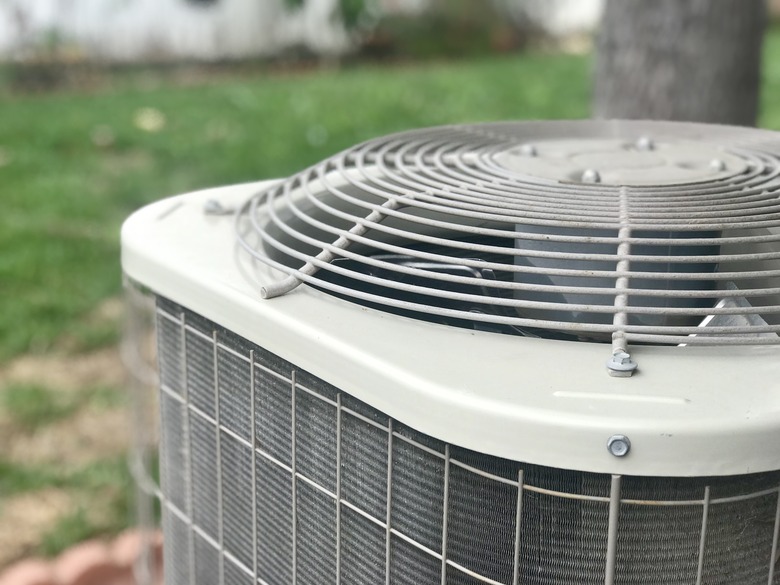Clogged Filter Dryer In The Liquid Line
When a faithful old refrigerator or air conditioning unit no longer seems to be getting the job done, figuring out why can be tricky. Any number of system breakdowns could be responsible for stealing your cool. One very common cause, and one you should expect periodically if you haven't been maintaining your refrigeration unit on schedule, is a clogged liquid line filter dryer.
Identifying the Liquid Line
Identifying the Liquid Line
The liquid line is the copper tubing that connects the condenser coil to the expansion valve. It's so named because it carries refrigerant during the part of the refrigeration cycle when it's liquid.
The refrigerant enters the condenser coil as a vapor that's under so much pressure that its temperature is higher than that of the air outdoors. The second law of thermodynamics states that heat flows from warmer substances to cooler ones; accordingly, the vaporized refrigerant loses heat as the condenser coil brings it into contact with outside air. As it cools, the refrigerant changes from a gas to a liquid. The copper liquid line carries it into the expansion valve, where a drop in pressure will cool the liquid to a temperature below that of the air inside the building.
Importance of the Filter Dryer
Importance of the Filter Dryer
In refrigerant units with an expectation of system servicing, you'll find a filter dryer installed on the liquid line. As its name suggests, it serves two important functions: filtering contaminant particles out of the liquid refrigerant and removing water moisture from the system.
Contaminants can enter the refrigeration system during manufacturing and assembly, during the wear and tear of optimal use, or whenever suboptimal conditions cause damage to machine parts. The filter dryer stops all particles large enough to damage the system — particles 20 microns or greater.
The filter dryer contains a group of molecular sieve beads that can take up a very large amount of water, effectively removing it from the system. Over time, moisture would otherwise accumulate and cause the formation of corrosive hydrochloric acid, obstructive ice crystals and system freeze-ups.
Why Filter Dryers Clog
Why Filter Dryers Clog
A liquid line filter dryer has a limited life span. All the particles it filters out of the refrigerant will eventually clog it up. Similarly, the moisture sieve beads will inevitably reach a saturation point; they can hold only so much water. A regular preventive maintenance schedule will help you avoid reaching this point because you'll regularly replace the filter dryer. If a system is experiencing other problems causing it to function poorly, the filter dryer can clog sooner than scheduled.
Symptoms of a Clog
Symptoms of a Clog
As a liquid line filter dryer clogs up, it begins to meter, or restrict, the amount of refrigerant that can pass through. Usually this becomes apparent as the unit's effectiveness decreases. The restricted flow of refrigerant causes abnormal temperatures throughout the system. The evaporator and compressor areas become hotter than normal, while the condenser and liquid line cool dramatically. A serious filter dryer clog can cause sweat or even frost to form on the outside of the liquid line.
